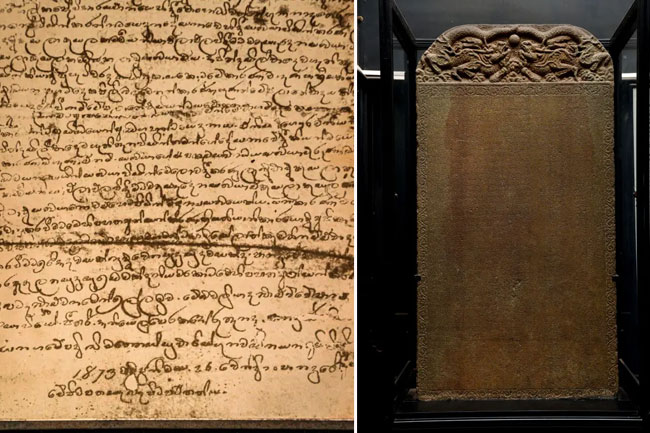UNESCO inscribes Sri Lanka’s Tribhasha Sellipiya & Panadura Vadaya documents in Memory of the World Register

Sri Lanka’s Trilingual Inscription (Tribhasha Sellipiya) and a collection of documents connected with the Pānadurā Vādaya (The Great Debate of Panadura) in 1873 have been inscribed in the UNESCO Memory of the World Register, the United Nations Educational, Scientific and Cultural Organization (UNESCO) announced on Thursday.
The Trilingual Inscription, a submission made jointly by China and Sri Lanka, is a stone tablet with Chinese, Persian and Tamil inscriptions, praising Buddha, God Vishnu and Allah.
Discovered in 1911 in Sri Lanka by a British engineer, it is now preserved in the Colombo National Museum, with a replica exhibited in the Galle National Museum. Dated 15th February 1409, the tablet was installed by the Chinese Admiral Zheng He.
Originally inscribed in the Treasure Boat Shipyard Park in Nanjingin, it was brought to Sri Lanka during his third voyage. The text mentions offerings made to a sacred mountain shrine.
This is the only trilingual inscription having texts in Chinese, Tamil and Persian which represent three different regions and cultures, according to the UNESCO.
Meanwhile, four documents connected with the Pānadurā Vādaya in 1873, kept at the Rankot Viharaya Buddhist temple in Panadura, which was also inscribed in the UNESCO Memory of the World Register on Thursday, hold immense historical, cultural, spiritual, and intellectual value.
Created against the backdrop of religious discord between Buddhists and Christians in mid-19th century, they consist of correspondence between the Christian and Buddhist leaders advocating for an open dialogue on doctrinal issues, as well as a transcription of the entire dialogue.
This transcription spans 27 and a half page of handwritten text on paper using ink, the UNESCO decribed.
The event fostered reconciliation and mutual respect between the two religious communities. The English translations, later made available in Europe and the US, had a significant impact on religious activists and scholars in those countries, contributing to the recognition Buddhism as an advanced religion.
The Memory of the World Register consists of documentary collections including books, manuscripts, maps, photographs, sound or video recordings, which bear witness to the shared heritage of humanity.
“Documentary heritage is an essential yet fragile element of the Memory of the World. This is why UNESCO invests in safeguarding it, shares best practices, and maintains this register that records the broadest threads of human history,” said UNESCO Director-General Audrey Azoulay.
With the latest additions, the Memory of the World Register now comprises 570 collections, encompassing a wide range of subjects including the scientific revolution, women’s contribution to history, and major milestones of multilateralism.
Established in 1992, the Memory of the World Programme aims to promote the preservation of – and universal access to – the documentary heritage of humanity. Often extremely fragile, this heritage is exposed to risks of deterioration and disasters.
In addition to the International Register, UNESCO has supported the creation of four regional registers and National “Memory of the World” Committees in more than 100 countries.

